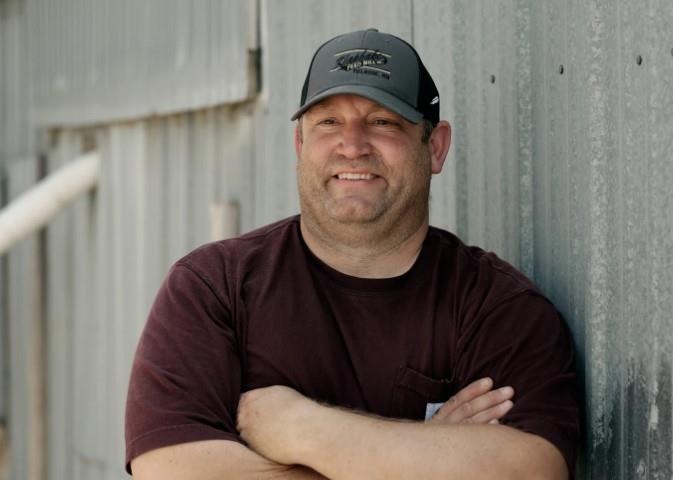State of: The 2020 Census and New Congressional Districts
The 2020 census provided a trove of information about our nation’s growing population, including the data that spurred the reapportionment of the U.S. House of Representatives’ 435 seats. As congressional seats shift every 10 years, where do they go?

Seven states lost one congressional seat, including, for the first time, California. These seats went to six states, with Texas gaining two congressional districts. This map shows how the seats shifted between the states.
This article looks at where these seven new congressional districts landed in their newly awarded state, with a focus on the rural and suburban/urban characteristics associated with them.
8th Congressional District
Formed by the Colorado Independent Redistricting Commission, this newly created district begins in the northern Denver suburbs and stretches northeast into sparsely populated communities. The bulk of the district’s population is found near Denver, where the three counties of Adams, Larimer and Weld boast an 80% or higher urban population.
This new district is one of four surrounding the Denver metropolis, leaving only the 3rd and 4th congressional districts as the more rural districts in the state.
The new 8th District has a suburban core and radiates into smaller rural communities.
Florida’s 28th Congressional District
This new district was formerly known as the 26th District, but with the newly drawn lines it relies heavily on the population based in Miami-Dade and Monroe counties and swings down to encompass the Florida Keys. It also includes the rural Everglades portion of the state, as well as Everglades National Park.
It is a heavily Hispanic seat, with 73% identifying as such. The southern Miami counties (Miami-Dade and Monroe) make this new congressional district overwhelmingly urban/suburban.
Montana’s 1st Congressional District
Montana has had multiple representatives in the past, but it’s been an “at-large” state since the 1990 census. It returns to a two-district state this cycle. The incumbent, Rep. Rosendale is running in the eastern 2nd District and the newly created 1st District is the new, open seat.
Even though the state conjures visions of rural settings, the 1st District’s demographics have an underpinning of rapidly growing population centers in the greater Missoula (118,000), Bozeman (54,000) and Butte (35,000) areas.
This new district is the most balanced of all new districts between smaller rural communities and their urban/suburban counterparts. The same can be said for the 2nd District, which covers the eastern two-thirds of the state. The two districts have a strong agricultural base.
North Carolina’s 14th Congressional District
North Carolina added the 14th District via the 2020 census. The district lines are carved out of the ever-growing region that includes the cities of Gastonia, Mount Holly and Belmont, as well as nearly half of the city of Charlotte.
Gaston County has an 80% urban population. Charlotte is found in Mecklenburg County, which is over 96% urban. Taken together, this new district will have little, if any, rural population.
Oregon’s 6th Congressional District
In the fast-growing Northwest, Oregon was given an additional seat, creating the state’s 6th congressional District. Drawn by the Democratic-controlled Legislature, it’s located along the Interstate 5 corridor and includes much of the Willamette Valley and the state capital of Salem and runs north to the Portland suburbs.
Land-wise, the largest portions of the district are the rural portions of Yamhill and Polk counties. It’s the Willamette Valley fertile soil that allows for a rich variety of specialty crops and it’s known as a major wine-producing region.
This new district has a mix of rural towns to go along with its urban centers. It has a strong agricultural presence, which often serves as a poster child for the state’s economic diversity.
Texas’ 37th and 38th Congressional Districts
Texas received two congressional districts and with such a fast-growing population, had no trouble fitting them into the even-faster growing regions of the state.
The 37th District is almost completely within Travis County, with a small portion in Williamson County. This district is essentially the city of Austin and a portion of its suburbs. The resulting demographics makes what was once a semi-rural area into what is now an 80% urban/suburban district.
The new 38th District is west of Houston and includes Houston suburbs and parts of Harris County. Like the 37th District, it fits into the growing suburbs that are ever-expanding across the state.
While the state has several large rural congressional districts, the 37th and 38th do not fit in this category. They are tightly drawn to represent urban and suburban constituencies.
The Big Picture
Understandably, each of these newly created districts have high-density population centers at their core. A few, like Colorado’s 8th, Montana’s 1st and Oregon’s 6th, have a rural population to match their suburban centers.
It’s important to note that congressional districts follow population trends. And the urban districts of North Carolina’s 14th, Texas’ 37th and 38th and Florida’s 28th show that in fast growing states there will be congressional districts without much rural or agricultural representation. It’ll be another 10 years before these district lines are drawn once again. The question is how can we expect rural communities will be mixed with the urban centers?
Click here to see more...